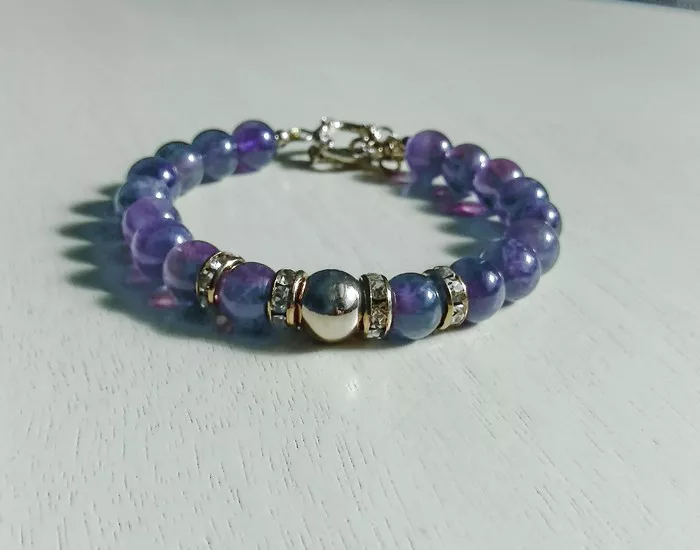Tennis bracelets have long captivated jewelry enthusiasts with their seamless beauty and timeless design. This article delves into the intricate process of crafting tennis bracelets, from the initial design stages to the meticulous craftsmanship involved in setting each stone. By exploring the materials, techniques, and artisanal skills required, you’ll gain a comprehensive understanding of the journey from raw materials to the exquisite finished piece.
Introduction to Tennis Bracelets
Before delving into the manufacturing process, it’s important to understand the characteristics and appeal of tennis bracelets:
Design: Tennis bracelets feature a continuous line of diamonds or gemstones, typically set in precious metals like gold or platinum.
Flexibility: They are designed to be flexible, allowing them to conform comfortably to the wrist while maintaining a uniform appearance of stones.
History: Originally known as “eternity bracelets,” their modern name stems from a famous incident involving tennis player Chris Evert and her bracelet mishap during a match.
Step-by-Step Manufacturing Process
1. Design Concept
The creation of a tennis bracelet begins with conceptualizing its design:
Inspiration: Designers draw inspiration from trends, customer preferences, and aesthetic considerations.
Sketching: Initial designs are sketched, incorporating details such as stone size, setting style, and overall bracelet dimensions.
2. Material Selection
Choosing the right materials is crucial to achieving the desired quality and appearance:
Diamonds or Gemstones: Selection of stones based on quality factors like cut, clarity, color, and carat weight.
Metal Alloy: Determination of the metal alloy (e.g., 18K gold, platinum) based on durability, color preferences, and complementary aspects to the stones.
3. Casting or Fabrication
The metal components of the bracelet are either cast or fabricated depending on the design:
Casting: Molten metal is poured into a mold to create the basic shape of the bracelet.
Fabrication: Metal sheets or wires are manipulated and joined together to form the bracelet structure, ensuring precision and strength.
4. Stone Setting
Stone setting is a meticulous process requiring skilled craftsmanship:
Preparation: Each stone is examined and sorted according to size and quality.
Setting Techniques: Stones are typically set using prongs (claws) or in channels, ensuring they are securely held while maximizing their brilliance.
See Also: How Much Is a 3 Carat Diamond Tennis Bracelet Worth?
5. Polishing and Finishing
The bracelet undergoes polishing and finishing to enhance its aesthetics and smoothness:
Polishing: Buffing and polishing remove any surface imperfections and bring out the shine of the metal and stones.
Finishing Touches: Final adjustments are made to ensure the bracelet’s comfort, flexibility, and overall visual appeal.
6. Quality Control
Quality control is conducted throughout the manufacturing process to maintain standards:
Inspection: Each stage—from casting to stone setting to final polishing—is inspected for quality and accuracy.
Testing: Functional tests may include checking clasp functionality, stone security, and overall durability.
Artisanal Skills and Techniques
Crafting a tennis bracelet requires a blend of traditional craftsmanship and modern techniques:
Jewelry Making: Artisans skilled in jewelry making techniques such as soldering, stone setting, and polishing play pivotal roles.
Attention to Detail: Precision and attention to detail ensure each bracelet meets stringent quality standards and aesthetic expectations.
Modern Innovations in Tennis Bracelet Production
Advancements in technology have streamlined certain aspects of bracelet manufacturing:
Computer-Aided Design (CAD): CAD software allows designers to create intricate designs and visualize the final product before production begins.
Automated Setting Machines: Some high-tech facilities use machines for precise stone setting, enhancing efficiency and consistency.
Sustainability and Ethical Considerations
Increasingly, consumers and manufacturers are prioritizing sustainability and ethical sourcing:
Responsibly Sourced Materials: Use of conflict-free diamonds and gemstones, and recycled metals to minimize environmental impact.
Ethical Practices: Adherence to fair labor practices and transparency in the supply chain.
Conclusion
Tennis bracelets epitomize elegance and craftsmanship, each one a testament to meticulous design and skilled artistry. From the initial design concept to the final polishing, every step in their creation involves precision and attention to detail. By understanding the intricate manufacturing process—from material selection to stone setting to quality control—you can appreciate the craftsmanship behind these iconic pieces of jewelry. Whether worn for special occasions or as everyday adornments, tennis bracelets continue to captivate with their timeless allure and enduring beauty, making them cherished additions to any jewelry collection.

